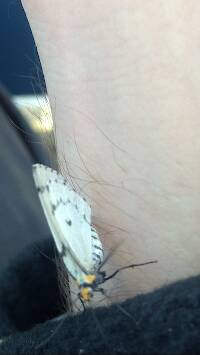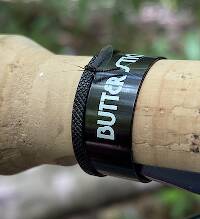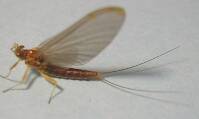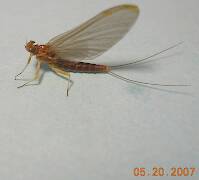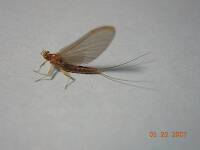
Hex Mayflies
Hexagenia limbata
The famous nocturnal Hex hatch of the Midwest (and a few other lucky locations) stirs to the surface mythically large brown trout that only touch streamers for the rest of the year.
Featured on the forum

Nymphs of this species were fairly common in late-winter kick net samples from the upper Yakima River. Although I could not find a key to species of Zapada nymphs, a revision of the Nemouridae family by Baumann (1975) includes the following helpful sentence: "2 cervical gills on each side of midline, 1 arising inside and 1 outside of lateral cervical sclerites, usually single and elongate, sometimes constricted but with 3 or 4 branches arising beyond gill base in Zapada cinctipes." This specimen clearly has the branches and is within the range of that species.

Troutnut is a project started in 2003 by salmonid ecologist Jason "Troutnut" Neuswanger to help anglers and
fly tyers unabashedly embrace the entomological side of the sport. Learn more about Troutnut or
support the project for an enhanced experience here.
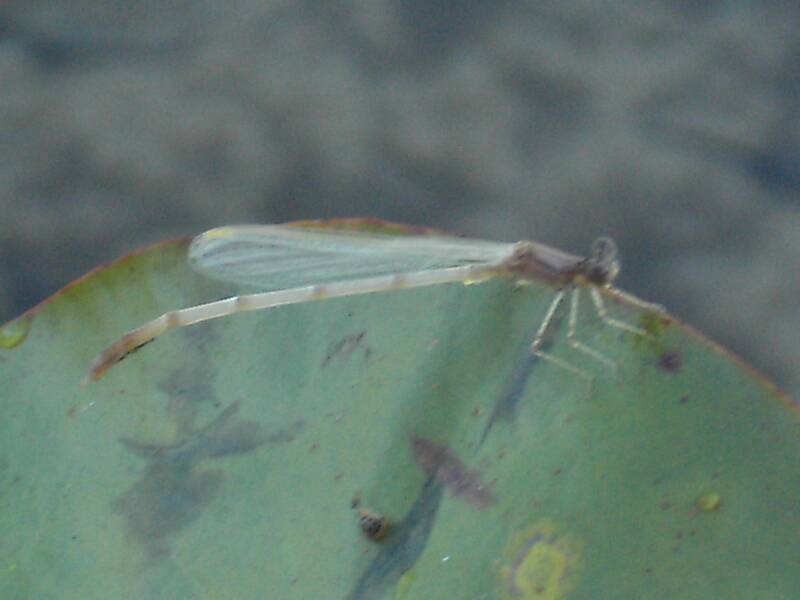
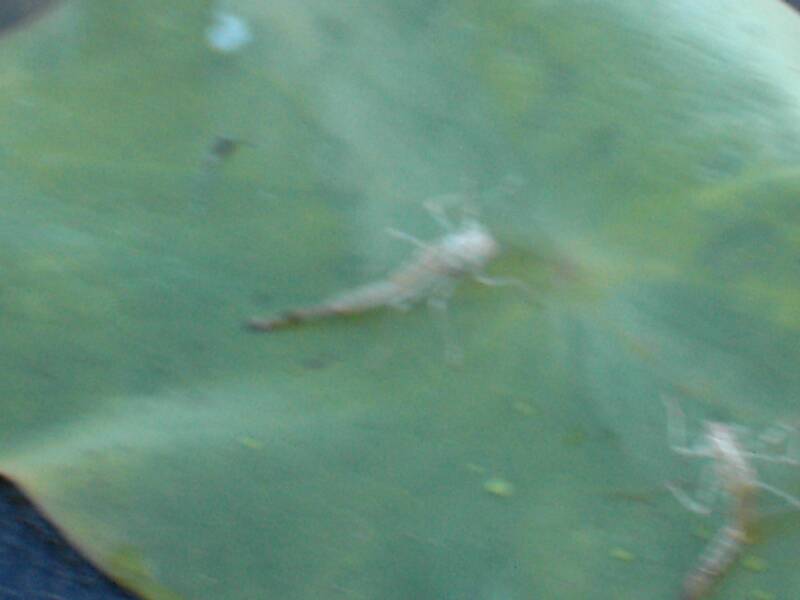
Delvalle
Posts: 1
Posts: 1
Delvalle on Jul 11, 2008July 11th, 2008, 9:00 am EDT
Hi Everyone,
I could use help identifying this insect. I scooped it off a lily pad on a small lake in NW lower Michigan. I noticed these insects appear on the water surface usually between 6:00 am to Noon. The nymph was also on the same lily pad. Additionally, there is a similar insect on the same lake much like this one. However, the thorax and tail are blue in color. (Sorry, I do not have photo of the blue insect.) Are these damsel flies or Mayflies? Sorry for the questionable quality of the pictures. I am new at this and still learning. Thanks.
I could use help identifying this insect. I scooped it off a lily pad on a small lake in NW lower Michigan. I noticed these insects appear on the water surface usually between 6:00 am to Noon. The nymph was also on the same lily pad. Additionally, there is a similar insect on the same lake much like this one. However, the thorax and tail are blue in color. (Sorry, I do not have photo of the blue insect.) Are these damsel flies or Mayflies? Sorry for the questionable quality of the pictures. I am new at this and still learning. Thanks.
Taxon on Jul 11, 2008July 11th, 2008, 9:35 am EDT
Hi Delvalle-
Your photographs are of an adult damselfly, and two abandoned damselfly nymphal shucks. In their nymphal form, the damselflies likely crawled up the stalk of the lily pad to above water level, which would only be achieved once on top of the pad, and then proceeded to depart their nymphal shucks, and fly away. Of course, it's also possible that one of the abandoned shucks belongs to the adult, and it hadn't yet taken flight.
Your photographs are of an adult damselfly, and two abandoned damselfly nymphal shucks. In their nymphal form, the damselflies likely crawled up the stalk of the lily pad to above water level, which would only be achieved once on top of the pad, and then proceeded to depart their nymphal shucks, and fly away. Of course, it's also possible that one of the abandoned shucks belongs to the adult, and it hadn't yet taken flight.
Quick Reply
Related Discussions
Topic
Replies
Last Reply
8
Jun 5, 2007
by Dinerobyn
by Dinerobyn



